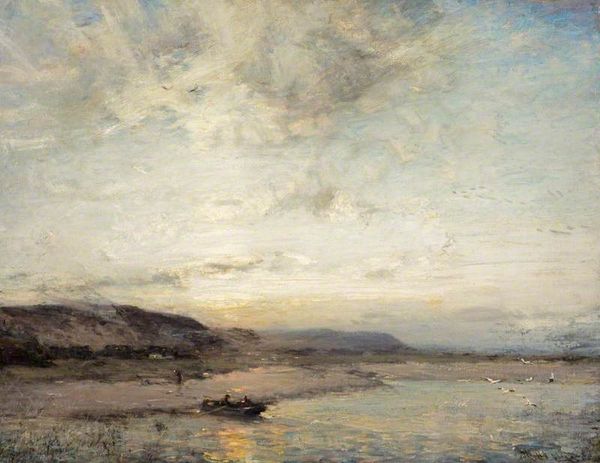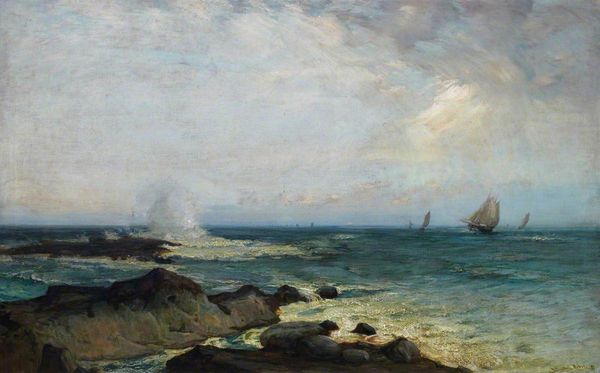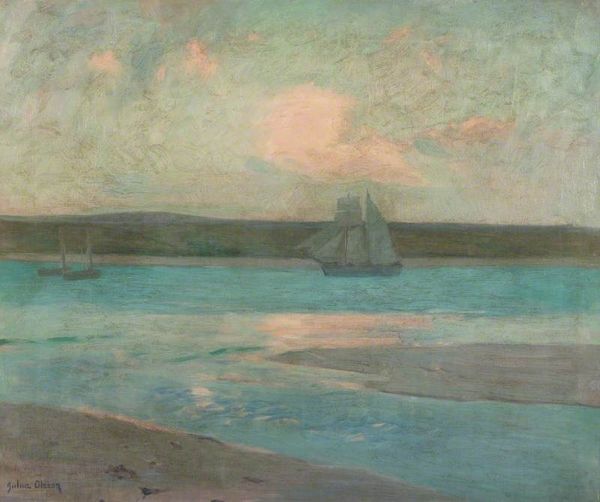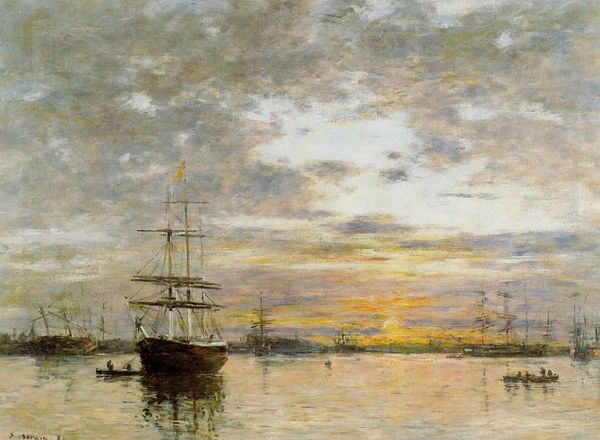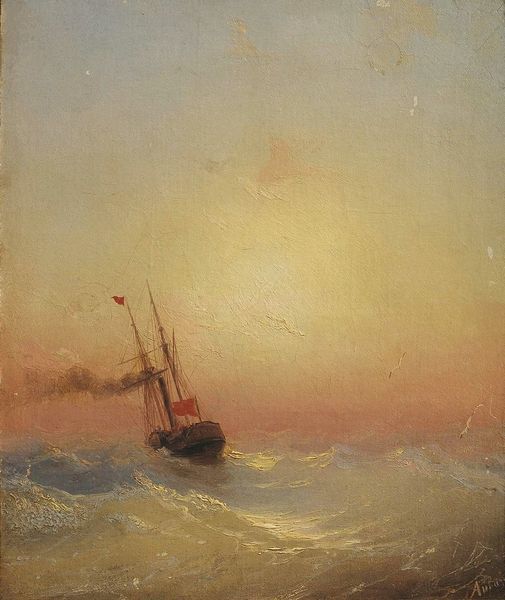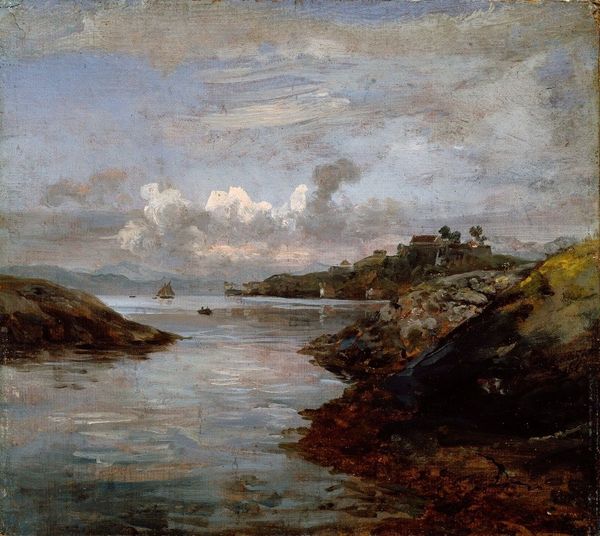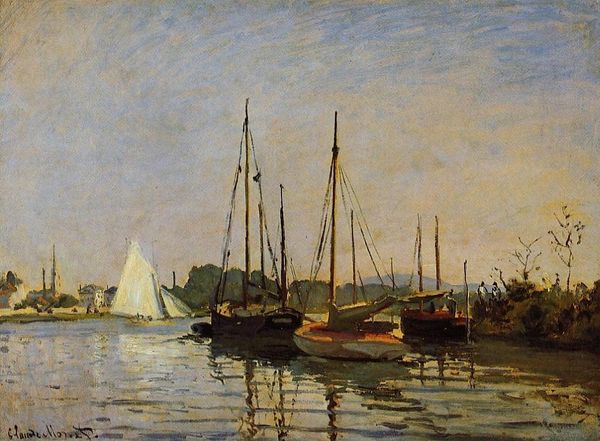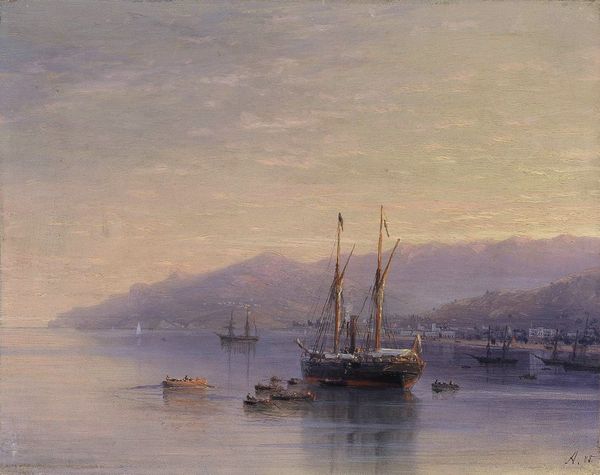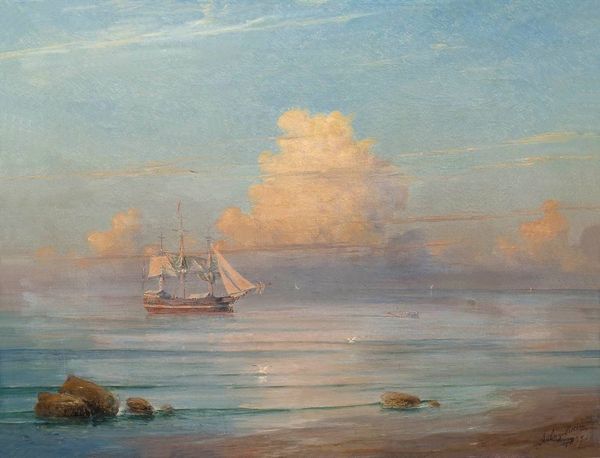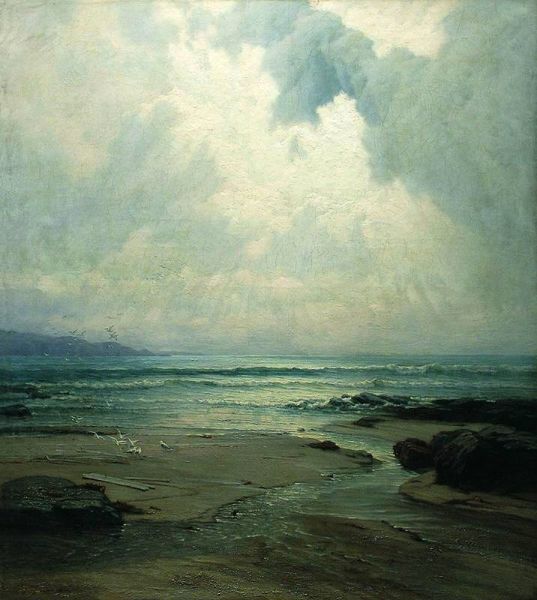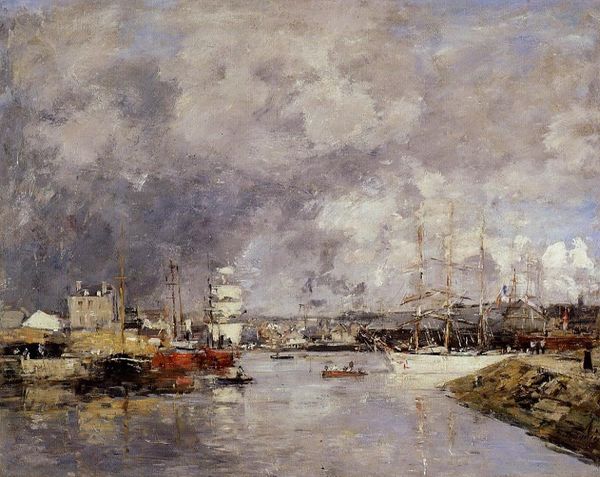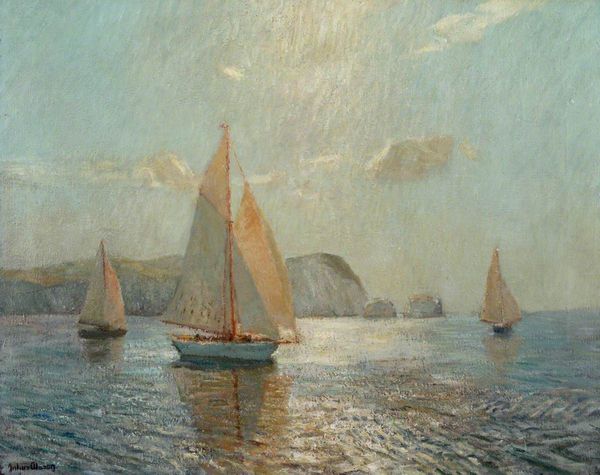
painting, oil-paint
#
painting
#
impressionism
#
oil-paint
#
landscape
#
charcoal drawing
#
oil painting
#
seascape
#
charcoal
#
realism
Copyright: Public domain
Editor: Here we have "Harbour Scene with Fishing Boats", an oil painting by James Campbell Noble. It’s all very muted and still, isn’t it? A quiet, grey scene. What strikes you when you look at it? Curator: It’s fascinating how Noble captures this liminal space, the harbor as both a place of work and a picturesque scene for leisure. Think about the late 19th century, when artists increasingly focused on everyday life. How might this painting speak to the rise of tourism alongside the realities of the fishing industry? Editor: So you're saying that even a simple landscape carries social meaning? Curator: Precisely. The “realism” here is selective. He presents a tranquil harbor, but where are the signs of labor? Is this a romanticized view, perhaps catering to a growing middle class interested in experiencing scenes of working-class life without actually engaging with it? Editor: That makes me look at the boats differently, almost as props. Does the rise of impressionism factor in? Curator: Absolutely. Impressionism, with its emphasis on fleeting moments and subjective experience, allowed artists to depict these scenes in a way that felt modern and fresh. Yet, even the seemingly objective “impression” is shaped by the artist's choices, reflecting their social context. Who did this art represent, and for whom? Editor: I guess I was so caught up in the pretty scene that I didn't think about who it was "for." Curator: That's the power of art! To simultaneously delight and subtly reinforce existing power structures. Editor: Thanks, that’s given me a lot to think about regarding art and its role in reflecting society. Curator: And it is by reflecting on all these various roles and questions that the scene truly comes alive.
Comments
No comments
Be the first to comment and join the conversation on the ultimate creative platform.
